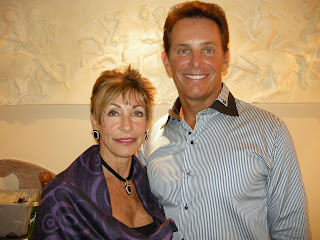We had breakfast at 7:00 and were picked up around 7:45 for our drive to The Simbambili Game Reserve. The drive would take about 3 hours but we had a wonderful tour while en route. We drove from 8 in the morning until 3 in the afternoon. We were on the top of a Mountain viewing from “God’s Window,” and afterwards we went to Blyde Canyon (3rd largest in the world). From there we went to two waterfalls, Lisbon & Berlin.
We went through small villages and stopped at Harries Pancakes to have lunch. Everything there was wrapped in a pancake and we wanted to try a traditional South African dish. We ordered Bumbund (pronounced Bumbundi), but it came in a pancake which is not the traditional way it’s served. It’s kind of a hamburger mixture with curry added and is supposed to have an egg on top and served with rice. Anyway, we continued on our sightseeing drive and made a couple of more stops. It was a great tour, we saw a lot.

We arrived at Simbambili around 3 and were promptly served lunch. We only had time to drop off our bags and sit down to eat. Simbambili is located at the far northern edge of Kruger in Sabi Sands. We will stay 4 nights . There were only accommodations for 8 couples and everyone had their own cottage, which, I might add were spectacular. We had a king-size bed (complete with mosquito netting), a wardrobe, a desk and a chaise and a long waist size bench at the entrance in one room. The bathroom had a huge oval bathtub, a separate shower (with no walls), a vanity, two sinks and a separate room for the toilet. All in stone, including the floor & walls. We had a deck the length of the room complete with a queen size day bed, a small pool and two lounge chairs. All in the open overlooking the brush and a small clearing where we could see the animals. The main building was all open, also all in stone, and overlooked a large pond, which was lit at night, that attracted the animals. We were in awe!

After our 3:00 lunch we went on our first drive. The vehicle was a Toyota Land Cruiser that had been custom equipped for the bush. We could have gone up the side of a mountain and almost did a couple of times. It sat 11 including the ranger/driver. In the very front of the vehicle sat our tracker perched on a single fold-down seat. There were 3 rows of seats in the vehicle that graduated from low to high. We never had more than 6 people with us at any drive with
Gary & I being 2 and 2 other couples making up the 6. We were lucky, on our first drive, which was upon our arrival at 4:00, we saw an elephant with her newborn baby, a warthog, a giraffe and a rhino. We couldn’t believe how close we were able to get to them. It was so exciting!

We got back at 7:10 and tried to unpack before dinner at 7:45. Everyone eats together so we can’t be late for any meal. Dinner was a choice of impala or chicken and we tried both. The impala was very gamey and we didn’t care for it. During dinner, at the watering hole in front of the main building, we saw a Rhinoceros. Too bad it was too dark to get a picture We got to bed after 10 and were told that they would knock on our door at 5:15 am.
We were exhausted, but at the same time exhilarated. What an experience!





















































